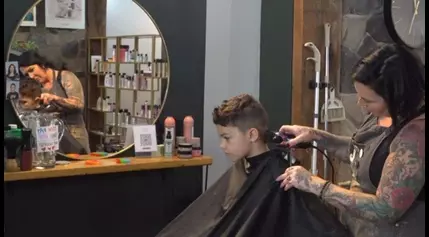The global pandemic has left an indelible mark on societies worldwide. In Hong Kong, the first case was recorded on January 22, 2020. Since then, the city has witnessed significant changes in daily life and preparedness for future health crises. This article explores how some residents' lives have been transformed, focusing particularly on the developmental challenges faced by children due to social distancing measures. One such story is that of Chloe Wang Kai-ying, whose speech development was severely impacted during her early years of schooling.
When Chloe began primary school in 2023, her parents noticed a concerning delay in her speech. The pandemic had kept her largely confined to home since she was three years old, with online kindergarten sessions replacing traditional classroom interactions. As a result, Chloe missed out on crucial speech therapy sessions that could have supported her language development. Her mother, Cecilia Wong Chung-suen, a housewife, observed that Chloe's communication skills deteriorated significantly during this period. Instead of engaging in meaningful conversations, Chloe often reverted to making unintelligible baby sounds, further isolating her from peers.
Despite the resumption of regular therapy after the pandemic, Chloe still struggles with communication at school. The lack of face-to-face interaction and the prolonged absence from structured learning environments have left lasting effects on her ability to express herself clearly. This case highlights the broader impact of the pandemic on child development, emphasizing the importance of early intervention and continuous support systems for young learners.
The experiences of families like Chloe's underscore the need for more comprehensive strategies to address the long-term consequences of the pandemic. While the immediate health crisis may have passed, the ripple effects on education and child development continue to be felt. It is crucial for communities and policymakers to collaborate in creating supportive environments that foster recovery and resilience among affected children.



















